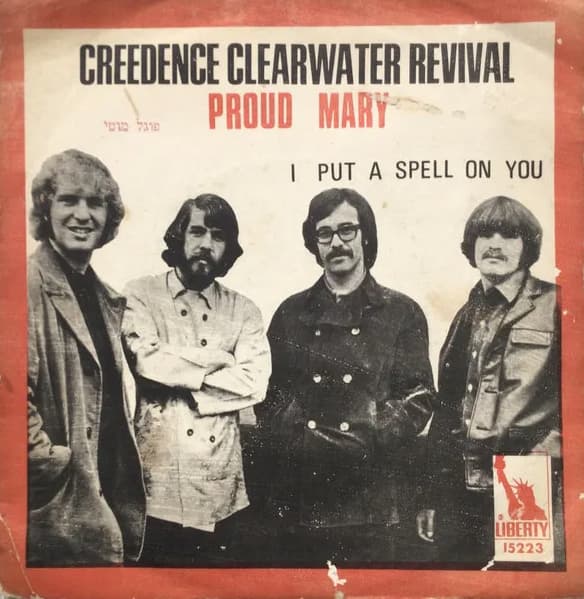
“Proud Mary” by Creedence Clearwater Revival: A Rock Anthem for the Ages
When Creedence Clearwater Revival released “Proud Mary” in January 1969, it didn’t take long for the song to become a defining moment in the band’s career. Written by John Fogerty, the lead singer and guitarist of the group, the song quickly rose to the top of the charts, peaking at #2 on the Billboard Hot 100 and establishing CCR as one of the most influential American rock bands of the late 1960s. With its unmistakable swamp-rock sound, “Proud Mary” remains a timeless anthem, known for its infectious rhythm, memorable lyrics, and powerful delivery.
The song begins with Fogerty’s now-iconic line, “Left a good job in the city,” immediately setting the tone for a narrative about escaping the grind of city life for the freedom of the open river. The “Proud Mary” of the song refers to a riverboat, which becomes a metaphor for freedom, simplicity, and the laid-back life that comes with living on the water. The imagery of rolling down the river resonated deeply with listeners during the turbulent late ’60s, a time when many were searching for peace and a break from the chaos of everyday life.
“Proud Mary” showcases Creedence Clearwater Revival’s signature blend of rock, country, and blues, often described as “swamp rock.” With its driving rhythm and Fogerty’s gritty, soulful vocals, the song became an instant classic, appealing to both rock fans and those who loved a good story-song. The song’s tight, minimalistic arrangement, with its sharp guitar riffs and dynamic rhythm section, highlights CCR’s ability to create a powerful sound without overcomplicating the music.
At its core, “Proud Mary” is a song about freedom—about getting away from the pressures of the modern world and finding solace in a simpler, more natural life. The lyrics paint a picture of a river that never stops flowing, symbolizing a sense of calm and continuity. As Fogerty sings, “Big wheel keep on turnin’, Proud Mary keep on burnin’,” it’s easy to imagine the slow, steady pace of life on the river, far removed from the demands of the city. The song’s bridge, with its famous lines “Rolling, rolling, rolling on the river,” is one of the most recognizable and singable moments in rock history, and it gives the track a sense of motion and energy that builds to a crescendo.
While the song was a massive hit for Creedence Clearwater Revival, its legacy only grew in the years following its release. In 1971, Tina Turner famously covered “Proud Mary” with her then-husband Ike Turner, transforming the song into a high-energy soul-rock powerhouse. Turner’s version became one of the most celebrated covers of all time, earning her a Grammy Award and further solidifying the song’s place in music history. The contrast between Fogerty’s more restrained original and Turner’s explosive rendition showcases the song’s versatility and universal appeal.
Despite the many covers and reinterpretations, Creedence Clearwater Revival’s version remains the definitive recording of “Proud Mary.” The song encapsulates the band’s unique sound—rooted in American blues and country traditions but delivered with the grit and intensity of rock ‘n’ roll. It’s a song that speaks to both the restless spirit and the desire for tranquility, a balance that made CCR stand out among their peers.
“Proud Mary” also marked a pivotal moment in Creedence’s career. After its release, the band would go on to become one of the most successful American rock groups of the era, with a string of hits that included “Bad Moon Rising,” “Green River,” and “Fortunate Son.” But it was “Proud Mary” that first put them on the map, demonstrating their ability to craft songs that were both musically compelling and lyrically resonant.
Decades later, “Proud Mary” remains a staple of classic rock radio, a song that continues to roll on, much like the river it describes. Its enduring appeal lies in its simplicity, its catchy melody, and its timeless message of escape and renewal. Whether it’s Fogerty’s original or Turner’s soulful cover, “Proud Mary” is a song that transcends generations, a rock anthem for the ages that still resonates with listeners today.